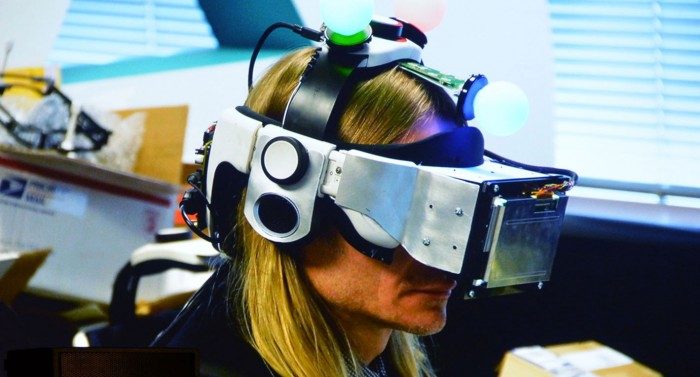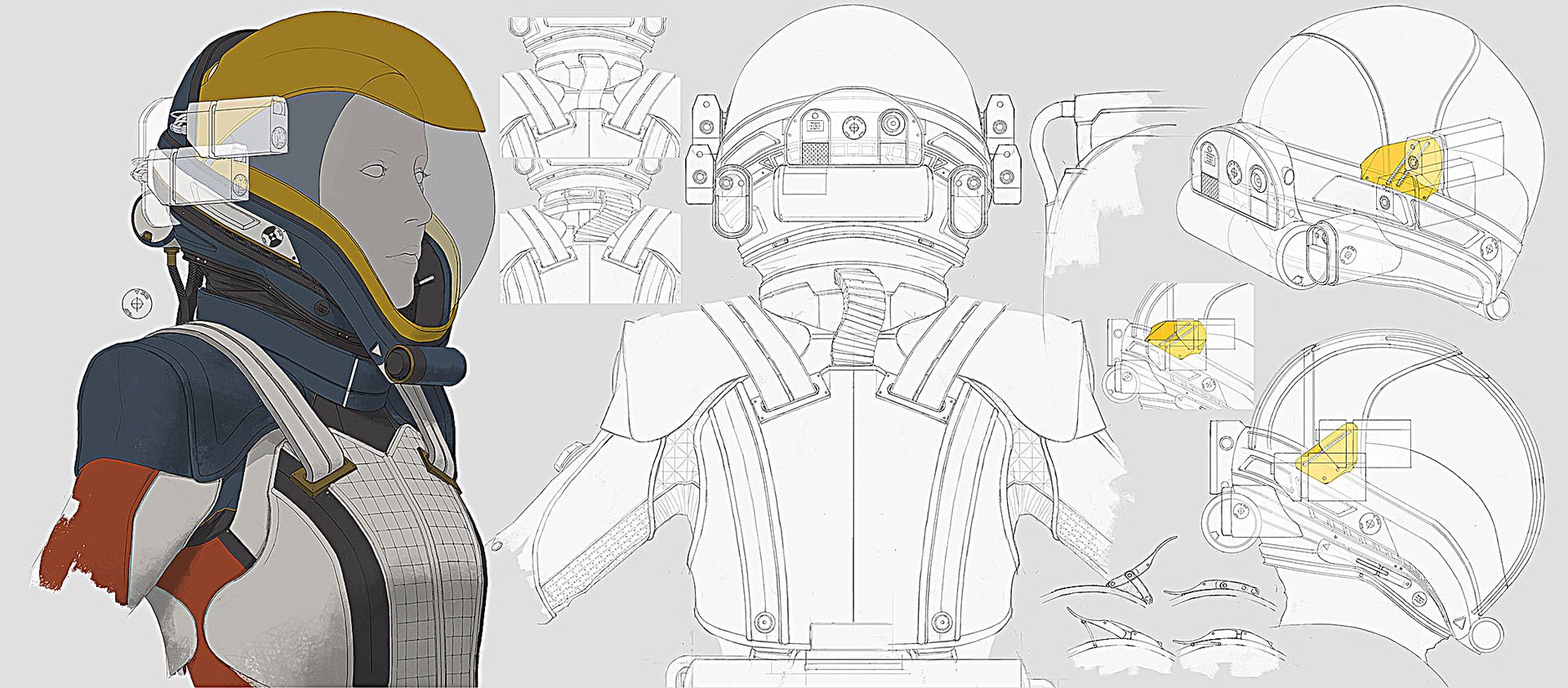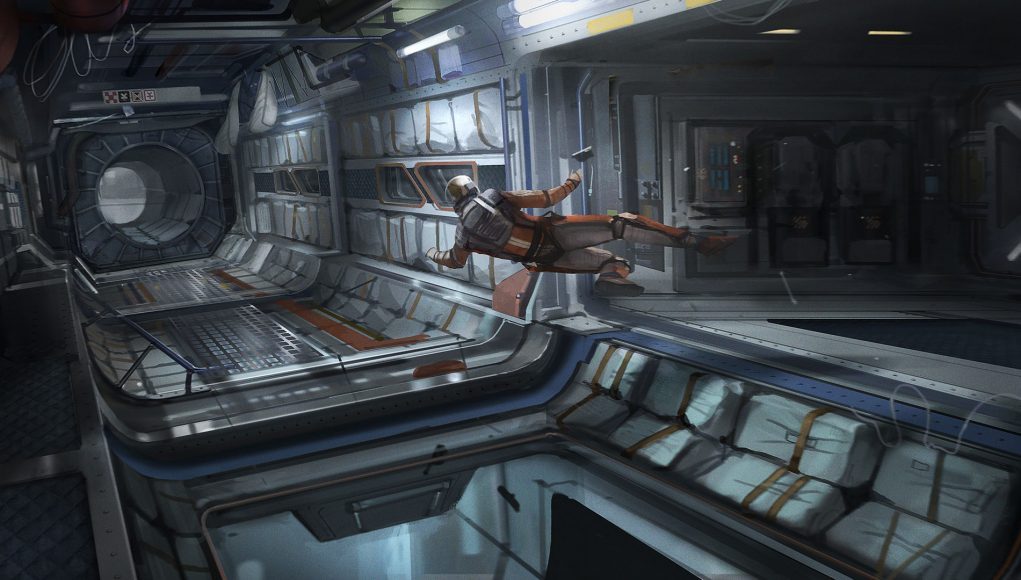After more than a decade of working on home and portable consoles, Ready At Dawn last year released Lone Echo and its multiplayer spinoff Echo Arena on the Oculus Rift & Touch. We talked with Ready At Dawn Founder & Chief Creative Officer Ru Weerasuriya to understand how the games came to be, the challenges faced during production, and the future of VR.
Editor’s Note: In celebration of Lone Echo’s win as the Rift Game of the Year in Road to VR’s 2017 Game of the Year Awards, Oculus provided five keys each valid for a full copy of Lone Echo on the Oculus Store. We decided to give them away in this article that we published back at the game’s 2017 launch by hiding the five keys within the images in this article. All five have been claimed, but if you like scavenger hunts they’re still there to find! The article was original published on July 24th, 2017.
“Literally, from that one conversation, everything happened,” an animated Ru Weerasuriya told us, talking on the eve of Lone Echo’s launch. He’s referring to a conversation he had with Jason Rubin—Head of Content at Oculus—way back in late 2014.
“We were in the last six months of working on The Order (2015) and we had ideas in the team about what we wanted to do next. I happened to meet Jason at a convention and we just took a little time to the side and started talking. He was telling me about why he had joined Oculus and what they wanted to do there, and I shared some ideas about what Ready at Dawn wanted to do.”
The team had their interest in VR piqued around 2012, at an internal conference for Sony developers.

“Shu was there with the tech team,” Weerasuriya said, referring to Shuhei Yoshida, President of Sony’s Worldwide Studios, “they were showing the very first iterations of ‘Morpheus’ which of course became PSVR. We had a chance to play, a chance to experience what VR would feel like in this generation.”
Clearly that early experience had a big impact on the team.
“Every time before that where VR had started and stopped I don’t think any of us felt, as development and content creators, that we were totally sold on VR. This time around, though, there was something different about Presence. Not just the resolution, but we truly felt that we’d be able to make people feel like they’re in another world.”
With development on The Order wrapping up, with Ready at Dawn talking about future projects, and with a familiar face from the game development scene in Jason Rubin arriving at Oculus, there was what Weerasuriya calls a perfect storm.
“But we didn’t want to just start making a VR game, we wanted to figure out what about VR we needed to do differently. And that’s how it started: we created a movement model, trying to figure out how to break certain boundaries in VR. We did a very, very small demo. It was just this little room with the movement model with a controller and two balls that were basically your hands. As you pressed the bumper buttons you would basically reach out to the world and move around. From there Oculus decided to sign it on.”
Prototypes & Development

And so work began in earnest in May 2015 on the project that was to become Lone Echo. At the time, however, it had a different name. “It was called Ascendant,” Weerasuriya said, “since we were creating zero-G movement and a zero-G experience how better to do it than to do it in space, in this plausible vision of a future for humanity.”
Turning introspective for a moment, he continued. “What we didn’t understand at the start of the project was what VR was gonna be about. So we started off with the idea of this story-driven single player game, same kinda thing that we’ve done in the past. But we had to relearn the basics of building a game to build it in VR.”
This learning extended to team sizes. “At the very beginning it was a handful of guys, four or five guys. Then after the demos the team went from 5 to 15 people very early on.” This is a number that crops up a lot when talking to VR teams working on AA content. It didn’t stop there, though. “We ended up, at the height of the project, at about 60 people on Lone Echo,” he told us. “It’s a pretty big team. A very big team, for VR definitely.”
From one conversation and the demo it spawned, Lone Echo and its evocative setting began to take shape. Before fully committing to a direction however, another demo was required to explore the idea further.
“The second demo was a space station and a big ball that was Saturn.” And the visual fidelity? “It was all grey-box, very basic.”
Weerasuriya shared stories about people just hanging out in this demo, as simple as it was, and how the team knew they were on the right track. Remembering back to those days, and indeed our own formative experiences with early VR content, we know exactly why this would have been captivating for people. Indeed, in the final game it’s possible to lose a lot of time just soaking up the atmosphere.
On the subject of time we shared that Road to VR’s Scott Hayden, in reviewing the game, spent around six hours inside. Was that about par for a play through? “That’s actually on the shorter side,” he suggests. Of course a lot comes down to the individual; some people race between objectives on a sprint to the finish, while others stop to smell the virtual roses.
The Tech Behind the Magic

With the team in place it was time to move beyond the grey boxes into a world of 90Hz refreshes and forward renderers. Was there a temptation to jump into engines such as Unity or Unreal to jumpstart development? As it turns out, no.
“Everything is proprietary. It’s still the RAD engine. It’s the engine that shipped The Order, it’s the engine that shipped Deformers.”
Perhaps that answer isn’t surprising. Ready At Dawn are famed in the industry for being able to extract every ounce of power out of a host system, notably with their work on the God of War franchise on PSP and PS3, and more recently The Order: 1886 on PS4.
It’s one thing to build for a more traditional console title, however, and something else entirely to build for VR. When quizzed about the pitfalls and challenges in moving the RAD engine into VR, Weerasuriya seems entirely unfazed: “Those are the barriers that we love having, put it that way.” A little bit of revolution to mix in with the usual technological evolution then.
Were they not perturbed at the challenges of making their engine work with the intricacies of VR rendering?
“The reality is that everything is hard. At the end of the day it doesn’t matter whether you work on mobile, or VR, or PS4. Whatever it is, everything is hard,” Weerasuriya said. It’s a very pragmatic view to take, and suggests a fearlessness in the face of the technical hurdles. “It’s a brand new beast. You have no idea what it’s going to be like.”
“The engine actually adapted quite well where the rendering was concerned. Yes: hitting 90 FPS is a must and therefore we needed to find inventive ways to actually get there, but I trust [our tech team].”
The larger challenges, it turns out, were to come in an area that works hand-in-hand with the pure rendering capabilities of an engine: believable human characters driven by AI.

